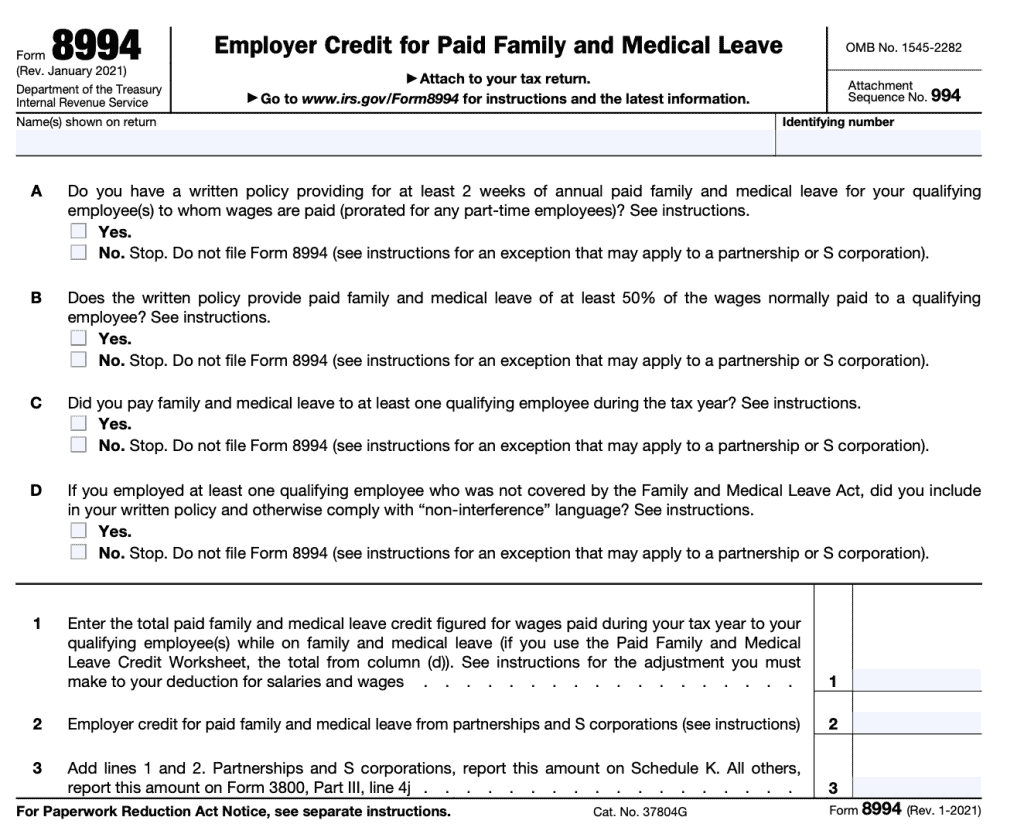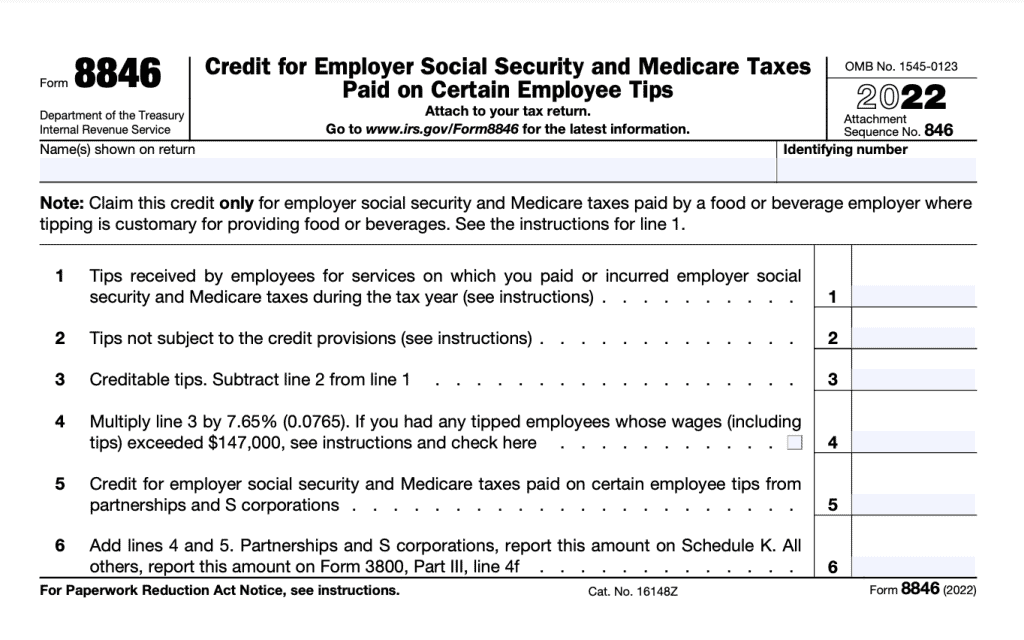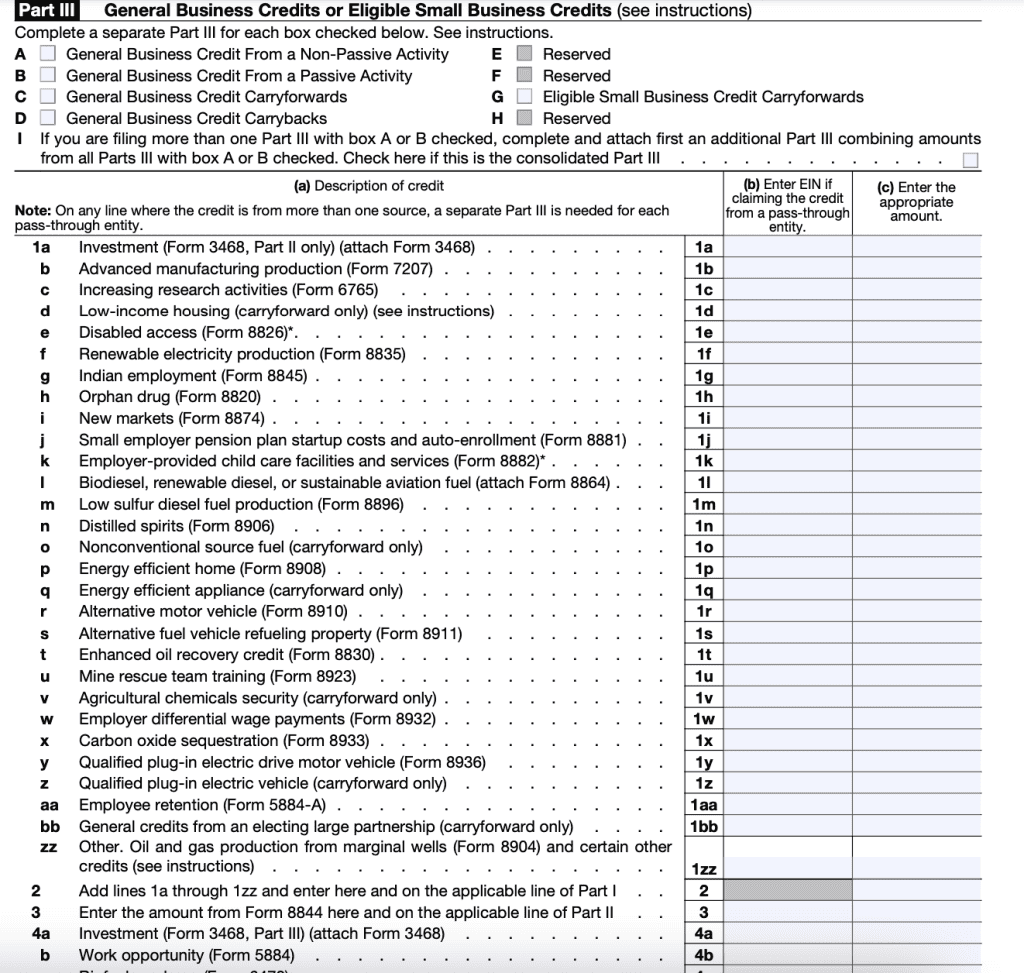
Small Business Taxes and Accounting with Unlimited Support
1-800Accountant is a full accounting service designed to handle everything for you — from monthly bookkeeping and payroll to year-round tax strategy and filing.
Learn More💳 Save money on credit card processing with one of our top 5 picks for 2025
Tax credits can reduce the amount of money your business owes the IRS or increase your potential refund. Which credits are your small business eligible for?
Tax credits are a great way to lower the amount of taxes you owe the IRS and can even increase your tax refund if you’re lucky. With over 30 tax credits available to small business owners, it can be overwhelming to learn which tax breaks you should (or are allowed to) take.
We’ve compiled a list of the seventeen most common tax credits for small businesses and how they work so that you can file your business taxes with confidence and maximize your tax refund this year.
Table of Contents
A business tax credit reduces the amount of money a business owner has to pay to the IRS. Unlike tax deductions, which reduce the amount of income you can be taxed on, tax credits directly affect your overall tax refund.
A tax credit will either reduce the amount of money you owe for taxes if you have to pay the IRS for the tax year, or it will increase the amount of your tax refund if the IRS owes you. Tax credits are generally allotted for business practices that benefit employees (like paid family leave, health insurance, etc.) or that benefit the planet (like electric vehicle usage, energy-efficient fuel usage, and more).
There are over 30 small business tax credits available to business owners (plus dozens of tax deductions as well), but here are the 17 most common tax credits that your small business might be eligible for.
If you paid employees during the pandemic in 2021, you could be eligible for the employee retention tax credit. The employee retention credit (ERC) grants eligible business owners up to $26,000 per employee on their payroll during the pandemic. Although the deadline to file claims for wages paid in 2020 has passed, taxpayers have until April 15, 2025, to file an amended claim for wages paid in 2021.
The ERC is a legitimate tax credit that can hugely benefit certain businesses, but it has gotten flak in recent months due to a surge in companies trying to scam ineligible business owners into taking the ERC. To avoid ERC scams, make sure you understand the ERC eligibility requirements and only work with reputable ERC companies to file your ERC claim (or calculate the ERC credit yourself and file directly with the IRS).
If your business is conducting research or experiments, you may be able to write off all expenses related to that research. The research and development (R&D) tax credit will credit you with any work your small business put into creating:
If you’re unsure of what qualifies as R&D costs, consult with your accountant for how to claim the R&D tax credit or work with a trusted R&D company to file for this tax credit on your behalf.
The work opportunity tax credit (WOTC) is available to business owners that hire employees who traditionally faced employment barriers, such as:
Each type of eligible employee has strict qualifications that must be met to receive the WOTC. Each type also offers different tax credit amounts, so you’ll need to be careful and thorough when calculating this credit. Eligible business owners must fill out IRS Form 8850 to claim the work opportunity credit.
While separate from the work opportunity tax credit, the Indian Employment credit is available for business owners who employ American Indians.
If you are considered a “small employer” and provide health care to your employees, you may be eligible for this health insurance premiums tax credit of up to 50% of your employer-paid health insurance premiums.
You can use Form 8941 to guide you through the rigorous eligibility requirements for this credit or work with a trusted accountant or certified tax preparer to claim the health insurance premiums tax credit.
If you provided paid family leave or paid medical leave to your employees during the tax year, you could be eligible for a good-sized tax credit. You’ll need to meet certain requirements including:
Then, it seems intuitive, but you must have paid out an employee that year for family or medical leave. If any of your employees were eligible for paid leave and chose not to take it, certain stipulations will need to be met to qualify, so contact your accountant or tax preparer to make sure you’re eligible for this tax break.
If you meet these qualifications, the paid family leave and medical leave credit could save you money on your business tax return.

If your business is a startup, the IRS allows you to write off $5,000 worth of startup costs.
To qualify for the startup costs tax credit, your startup costs must not exceed $50,000. If your business exceeds this limit, you may qualify for a smaller write-off amount. Taxpayers with startup costs of more than $55,000 do not qualify for this credit.
Business owners that pay for their employees’ childcare or childcare referral services may be eligible for the Employer-Provided Childcare Facilities and Services tax credit, which could amount to up to $150,000/year.
Carefully read Form 8882 or discuss this tax credit with your accountant to see if you qualify.
For businesses “where tipping is customary for providing food or beverages,” small business owners can use Form 8846 to claim a credit for employer Social Security and Medicare taxes.
You’ll need to calculate the total amount of employee tips on which you paid Social Security and Medicaid throughout the year. Then a bit of math will be required to calculate exactly how much you qualify for.

Business expenses spent on disability access can qualify business owners for this tax credit. Eligible small businesses have to earn $1 million or less during the fiscal year and have no more than 30 full-time employees to qualify for the disability access credit.
Employers who set up retirement plans for their startups could be eligible for up to $5,000 for three years. To be eligible for this credit, you’ll need to have:
You’ll need to complete IRS Form 8881 or work with a certified tax preparer or accountant to help you claim this business tax credit.
There are multiple tax credits available to business owners who have electric vehicles, alternative motor vehicles, or use alternative fuel in their business vehicles. Check the IRS’s full list of business tax credits to see if your business vehicle qualifies.
Also, don’t forget to take advantage of vehicle tax deductions as well for mileage or expenses accrued throughout the year.
If you paid your employees for wages outside of their regular working hours, you could qualify for the employer differential wage payments credit. Using IRS Form 8932, qualifying businesses can receive 20% of up to $20,000 in differential wage payments per employee, which could add up quickly in your business’s favor.
Business owners can use Form 3468 to claim credits on certain investments including:
Speak to an accountant to understand if your investment in one of these fields qualifies you for this specific tax credit.
The New Markets Tax Credit program was designed to help develop low-income communities. If your business invested in a low-income community during the tax year through Community Development Entities (CDEs) you could be eligible for this tax credit. The New Markets Tax Credit can amount to up to 39% of the original investment amount paid out over several years.
You’ll need to work with your accountant or use the IRS Form 8874 to claim the NMTC yourself.
The Opportunity Zones tax credit, or OZ tax credit, is a tax incentive from the Tax Cuts and Jobs Act (TJCIA) initiative. Business owners who invested in a Qualified Opportunity Fund (QOF) can get a tax break.
This is another tax credit designed to encourage investments in low-income communities and can be claimed using IRS Form 8996.
The Employee Income Tax Credit (EITC) is for business owners with low to moderate incomes who file a Form 1040 or 1040-SR Schedule C. You can use the IRS’s online interactive EITC Assistant to see if you qualify.
There are even more tax credit incentives available for specific business industries. These niche business tax credits include:
Check the IRS’s complete list of business tax credits for more details.
Most small business tax credits fall under the “General Business Credits” category. The General Business Credit Form 3800 is one long list of potential tax credits:

Most of these specific tax credits have a corresponding form listed in parenthesis on the relevant line.
For example, in the picture above, Line ‘e’ is for the Disabled Access credit. On that line is also written Disabled Access (Form 8826). This means you’ll need to fill out Form 8826 to get your Disabled Access tax credit total; you’ll then write that total on Line ‘e’ of Form 3800.
You’ll repeat this for all eligible tax credits and then follow the Form 3800 instructions for adding up all of your business tax credits.
If you’re looking to maximize your tax refund, don’t forget to check out the top small business tax deductions to save even more this tax season.
While you don’t have to have an accountant to file small business taxes, we highly recommend working with a trusted certified public accountant (CPA) or certified tax preparer (CTP) to claim any business tax credits.
These professionals will help you understand the ins and outs of tax credit eligibility and ensure you maximize your tax deduction. To make their jobs easier, be sure to save all business investment and expense records throughout the year. Check out our complete guide on what information to bring your accountant for taxes or check out our free small business tax checklist for more small business tax support.
Want to help shape the future of the Merchant Maverick website? Join our testing and survey community!
By providing feedback on how we can improve, you can earn gift cards and get early access to new features.
Help us to improve by providing some feedback on your experience today.
The vendors that appear on this list were chosen by subject matter experts on the basis of product quality, wide usage and availability, and positive reputation.
Merchant Maverick’s ratings are editorial in nature, and are not aggregated from user reviews. Each staff reviewer at Merchant Maverick is a subject matter expert with experience researching, testing, and evaluating small business software and services. The rating of this company or service is based on the author’s expert opinion and analysis of the product, and assessed and seconded by another subject matter expert on staff before publication. Merchant Maverick’s ratings are not influenced by affiliate partnerships.
Our unbiased reviews and content are supported in part by affiliate partnerships, and we adhere to strict guidelines to preserve editorial integrity. The editorial content on this page is not provided by any of the companies mentioned and has not been reviewed, approved or otherwise endorsed by any of these entities. Opinions expressed here are author’s alone.